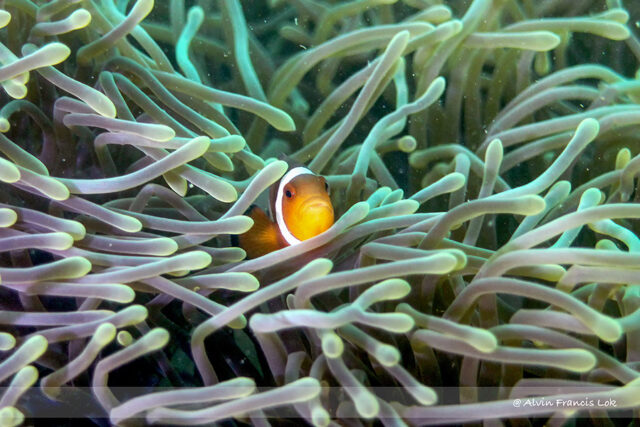Marina at Keppel bay is home to a kaleidoscope of marina life, and we were honored to have been invited to experience a pre-launch of the Coralwalk at Keppel Bay tour conducted at the marina’s pontoons by Lee Kong Chian Natural History Museum in collaboration with Marina at Keppel Bay. It was certainly a great opportunity to experience first-hand how marine life has been able to get a foothold on these manmade pontoons, thrive, and form artificial reefs.


The Marina was constructed based on an “Open Concept”, and Keppel Island where the marina is located is connected to the mainland via a suspension bridge that carries the water and electricity lines to the marina. Since the waterway between Keppel Island is opened at both ends, it allows currents to flow right through the marina, bringing nutrients and planktonic larvae that are essential to stimulate marine life and coral growth, while also allowing the currents to sweep away coastal sediment which may otherwise smother and kill the marine life.


The pontoon structures where the tour was conducted, are basically concrete structures with compressed air-filled cores to allow it to remain buoyant, allowing the structures to move up and down with the tides, thus allowing the marine life growing at the pontoon side to be always exposed to good currents and optimal sunlight without ever being exposed to the air even during low tides.





Many species of seaweed were seen clinging to the sides of the pontoons and these are all marine green, brown and red algae. These do not have roots, but structures called “holdfast” that perform the same function. Crustose coralline algae also cover many surfaces of the pontoon sides in a thin layer. The algae secrete calcium carbonate between its cell walls, creating a hard surface wherever it grows that cement coral reefs together. These directly promote coral adhesion and also provide a rougher surface for other macro-algae to attach themselves to via their holdfast.


There is also a myriad of coral species found on the pontoons. Many of these are soft corals species, with the hard corals mainly growing on the pontoons facing the channel openings where the currents are probably the strongest. Besides corals, there are also many species of sponges, sea squirts, sea cucumbers, or other interesting marine organisms waiting to be discovered.


Coral fish are also quite common here and we saw several species of butterfly fish, damsel fish, file fish and so on. We were lucky that the water visibility was rather good on the day of this tour and we were able to see a clownfish in its sea anemone home, cuddling amongst the sea anemone’s tentacles.The symbiotic relationship between this Magnificent Anemone (Heteractis magnifica) and a clownfish (Amphiron ocellaris) is a classic example of how two organisms benefit from Associating with the other; the anemone provides the clownfish with protection and shelter, while the clownfish provides the anemone nutrients in the form of waste while also scaring off potential predator fish. https://www.nationalgeographic.org/article/symbiosis-art-living-together/


We also spotted some species of jellyfish. Most of them are pretty harmless and you may only experience minor stings, which feel no more than minor pricks. The one to watch out for are the Box Jellyfish whose stings are extremely painful and potentially lethal to some individuals. These are not common, but in recent times have been reported from Singapore waters.



The Marina is open to the public and so is the island. The pontoons however are private areas and only opened for tours in a controlled guided manner to ensure the privacy of the boaters.
The tour is conducted by volunteer guides from the Lee Kong Chian Natural History, and
will start in April 2021 and conducted every third Saturday of the month till November at 10-11 am.
The first of the eight walks will be held on 17 Apr 2021. For more information and to register, https://lkcnhm.nus.edu.sg/coralwalk-at-keppel-bay/
Please check this Channel News Asia video footage minutes 46 onwards for the tour overview.
https://www.channelnewsasia.com/news/video-on-demand/its-in-our-nature/it-s-in-our-nature-saving-our-wildlife-14526672
Note: All the photos were taken from above the water ( no snorkeling or diving ), as you can see the waters are very clear, make viewing of the marine life from the pontoons easy.














